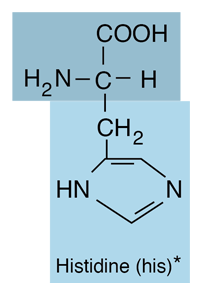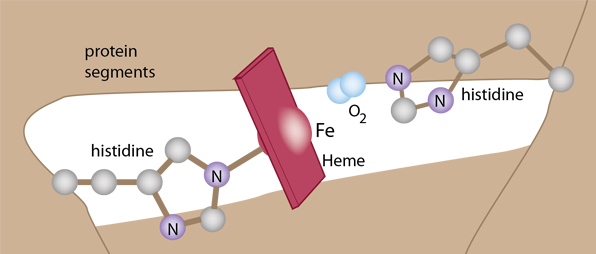Histidine
 | Histidine is an amino acid and belongs to the class which has acid or base R-groups. Initially thought essential only for infants, it has now been shown in longer-term studies to be essential for adults also. |
Histidine was first isolated by German physician Albrecht Kossel and Sven Gustaf Hedin in 1896. It is also a precursor to histamine, a vital inflammatory agent in immune responses.
The acid-base properties of the imidazole side chain are relevant to the catalytic mechanism of many enzymes. In a histidine proton shuttle, histidine is used to quickly shuttle protons. It can do this by abstracting a proton with its basic nitrogen to make a positively charged intermediate and then use another molecule, a buffer, to extract the proton from its acidic nitrogen.
Histidine forms complexes with many metal ions, for example the axial base attached to Fe in myoglobin and hemoglobin.

* Amino acids which are essential amino acids which cannot be made by the human body and, therefore, must be obtained in the diet.
- Three histidines are used as a framework for binding the metal zinc in the important enzyme carbonic anhydrase which helps carry CO2 to the lungs.
| Histidine wiki |
Biochemical concepts
Chemistry concepts
Reference
Tillery, Enger and Ross
Ch 14
Ahern
| HyperPhysics*****Chemistry *****Organic Chemistry | R Nave |